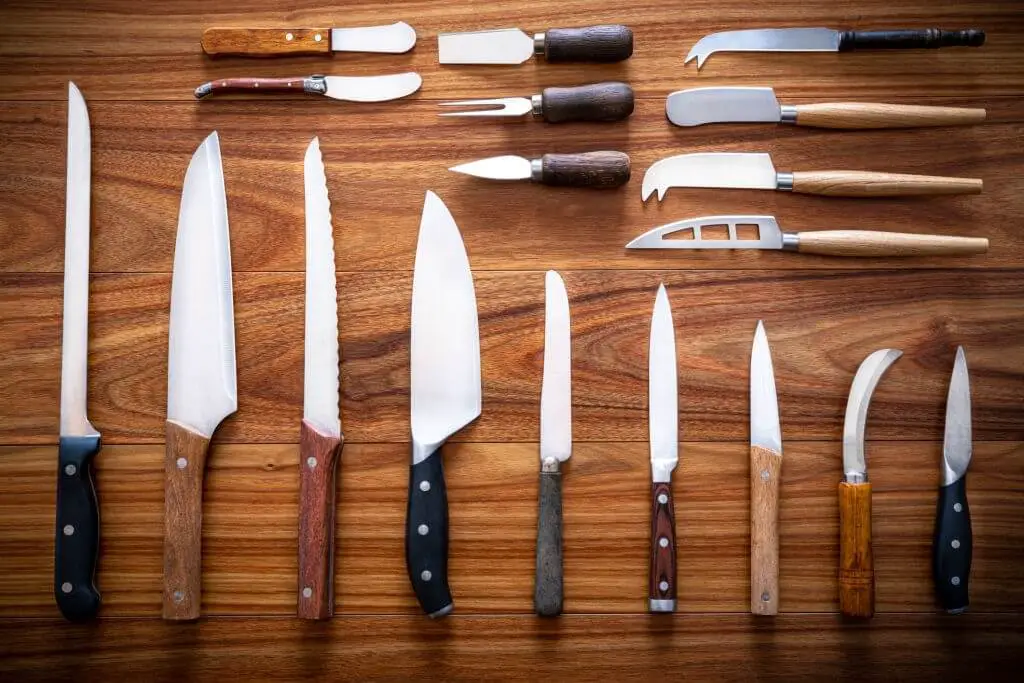The kitchen knife is designed specifically for a purpose that can bring more
ease in cutting food items.
Instead of buying a whole selection of knives that you will never use, it is better to know the top 10 names of kitchen knives and understand their specific purposes. Doing so, will encourage you to prep your meal with confidence and creativity.
In this article, we aim to lay out the popular names of kitchen knives and
the tasks they’re designed to handle in the kitchen, according to kitchen
experts.
Contents
Top 10 Names of Kitchen Knives (+ Their Uses)
1. Chef Knife

The chef knife is one of the most important blades in the kitchen. It has a broad blade tapering upward to a point making it easy to rock back and forth for fast mincing.
They are usually between 8 to 10 inches long and can be short as 6 inches and as long as 14 inches.
A chef knife is forged or stamped to allow it to endure frequent use, it comes with a full tang. The more comfortable you feel with the weight and balance, the quicker you’ll be able to slice.
Uses- The chef knife is used for almost every cutting task in the kitchen, from chopping and dicing fruits, vegetables, and herbs to cutting a variety of other food ingredients like meat, fish, and poultry.
2. Santoku Knife

The Santoku knife is an all purpose kitchen knife that originated in Japan. Also called Bunka bocho or Santoku bocho in Japan.
Santoku means “three virtues”: mincing, slicing, and dicing.
It is the Japanese version of a chef’s knife. It’s slightly shorter and thinner than a chef knife. It can be used in place of the chef’s knife, especially for cooks who prefer a lighter and smaller blade.
Santoku blade varies in size from 5 to 7.9 and has a wide blade with no tip, that curves down and approaches 60 degrees at the point.
Uses- They are best for slicing cheese and chopping or dicing fruits, vegetables, and nuts.
3. Kitchen Utility Knife
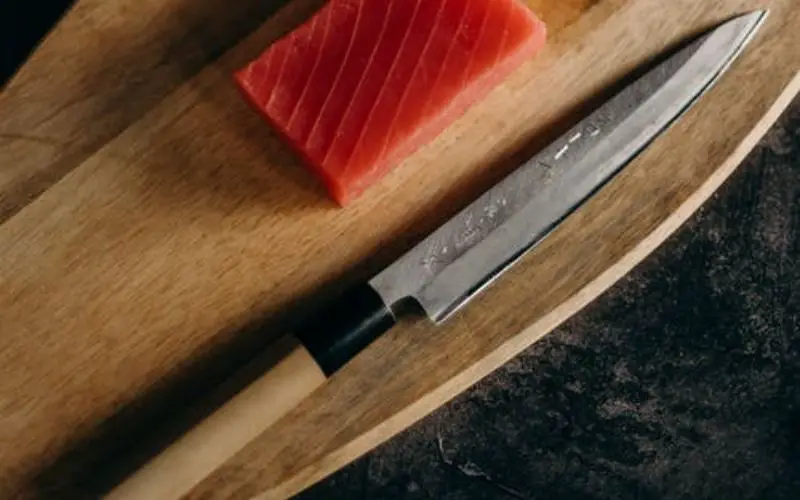
The Utility knife is smaller and more narrow than the chef’s knife. The small tip and narrow blade allow it to handle some tasks such as trimming thinner slicing and filleting.
The blade is longer than a paring knife, measuring between 4 and 7 inches in length and generally, it is 6 inches long. It is called the “knife of all trades” It comes in handy for an everyday chef.
Uses- They’re used for slicing and chopping small food items like vegetables and tender pieces of meat or sandwiches and also used in cutting food items that are too small for a chef’s knife.
4. Boning Knife
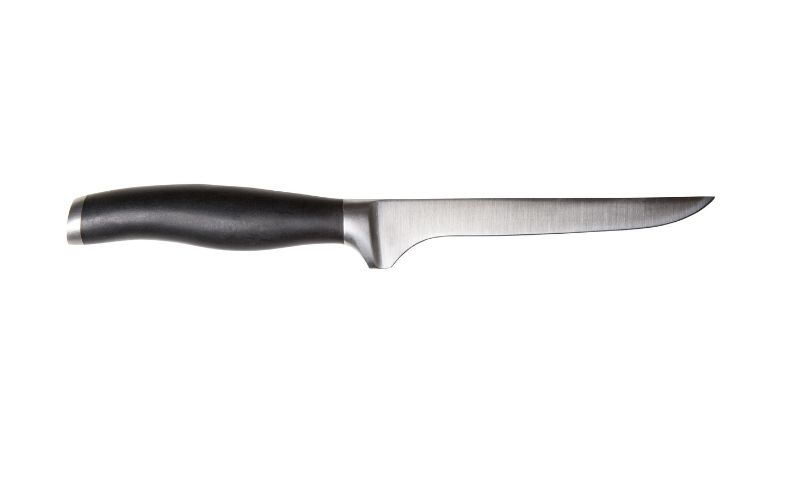
The boning knife has an extremely narrow blade with very sharp edges tapering upwards to a fine-pointed tip. It has a stiff blade that allows the use of greater force when you’re working with thick cuts of meat. They are about 3 to 8 inches in length.
A boning knife is a perfect knife for cutting meat bone and trimming cartilage, the strong rigid blade can also cut through cartilage.
Uses- It is used to cut around bones, not through them and you can also use it to remove the skin from fish.
5. Bread Knife

The bread knife has a long-sized blade with a sharp serrated edge that allows you to saw through bread without pushing down or squishing it. It is designed for use on softer food items and can be between 7 to 10 inches long.
Uses- A bread knife is used for cutting bread, cakes, and sometimes meat and seafood. In addition, you can use them to cut large melons while straight blades often get stuck.
6. Cleaver Knife

Cleaver knives are heavy and have a flat, rectangular-shaped blade that allows them to cut through bones and hard and thick food items such as squash or pumpkin.
They are the heaviest and broadest knives and come in different sizes depending on their intended use.
Uses- A cleaver knife is used to chop raw meat into smaller portions before cooking, making it the perfect knife for raw meat prep.
7. Paring Knife
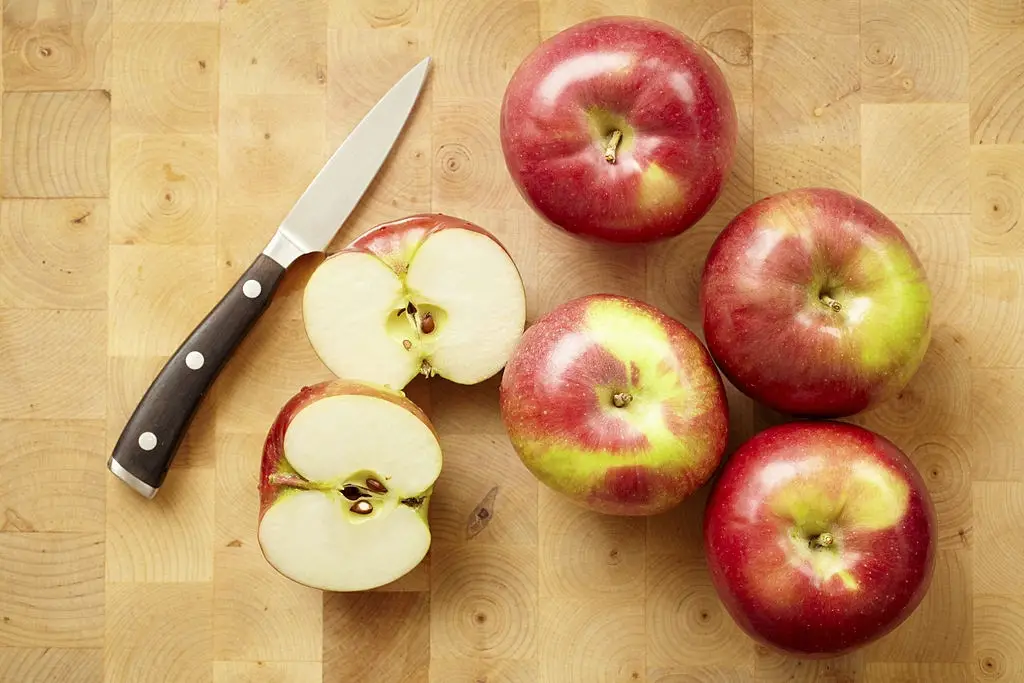
A paring knife is a short and thin 3 to 4 inches blade with a pointed tip. It is super sharp. The 3 most common styles you need to know are sheep’s foot, bird’s beak, and spear point.
Uses- It can be used for cutting, slicing, and peeling fruits and veggies, also removing seeds.
8. Fillet Knife
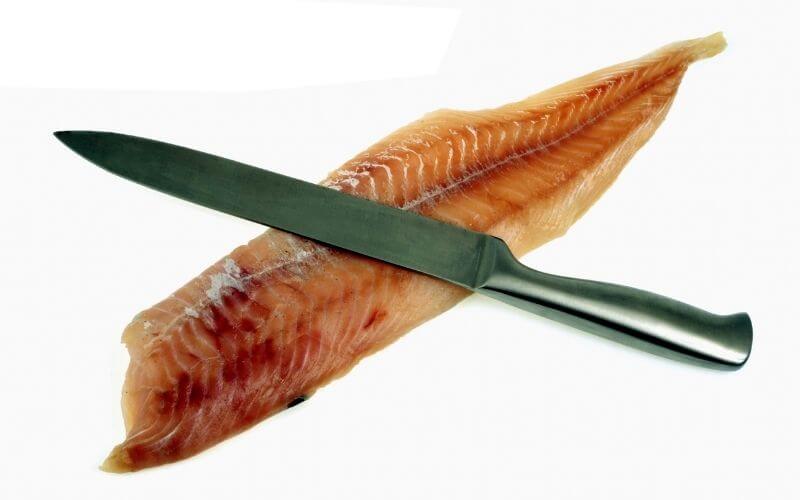
The Fillet Knife is a slim, long knife with a flexible blade. It has a very sharp edge and a fine pointed tip for piercing through the skin that allows it to the intricate bone.
The fillet blade is perfect for removing bones without damaging the flesh of the fish. It cuts through food horizontally allowing the cook to cut around the backbone of the whole fish to create the ideal fillets.
Since a boning knife is used to remove meat from the bone. It has a similar appearance to a boning knife but its blade is thinner, longer, and more flexible. The two knives’ distinctions are so small that they can substitute each other in most cases.
Uses- It is used in removing meat from the bone.
9. Steak Knife
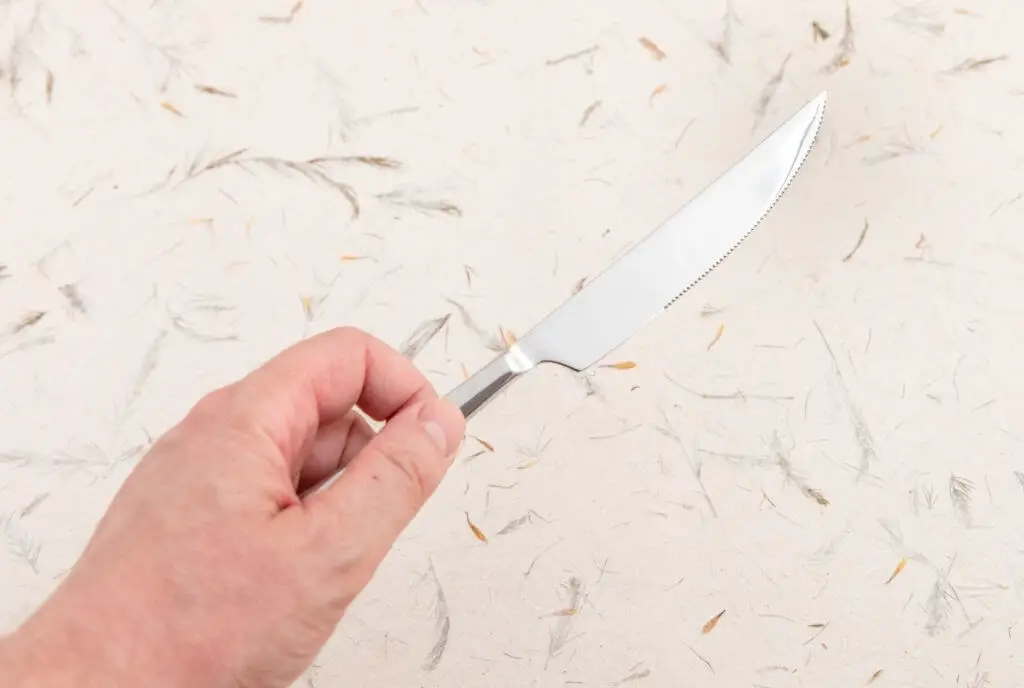
The steak knife is also called a table knife. Steak knives are often sold in sets, they come in a straight or serrated edge.
Serrated steak knives remain sharp for a longer period of time without sharpening while non-serrated knives become dull faster and are easier to sharpen.
Uses- They are small knives that are used at the dining table for cooked food. They’re great for steak.
10. Nakiri Bocho
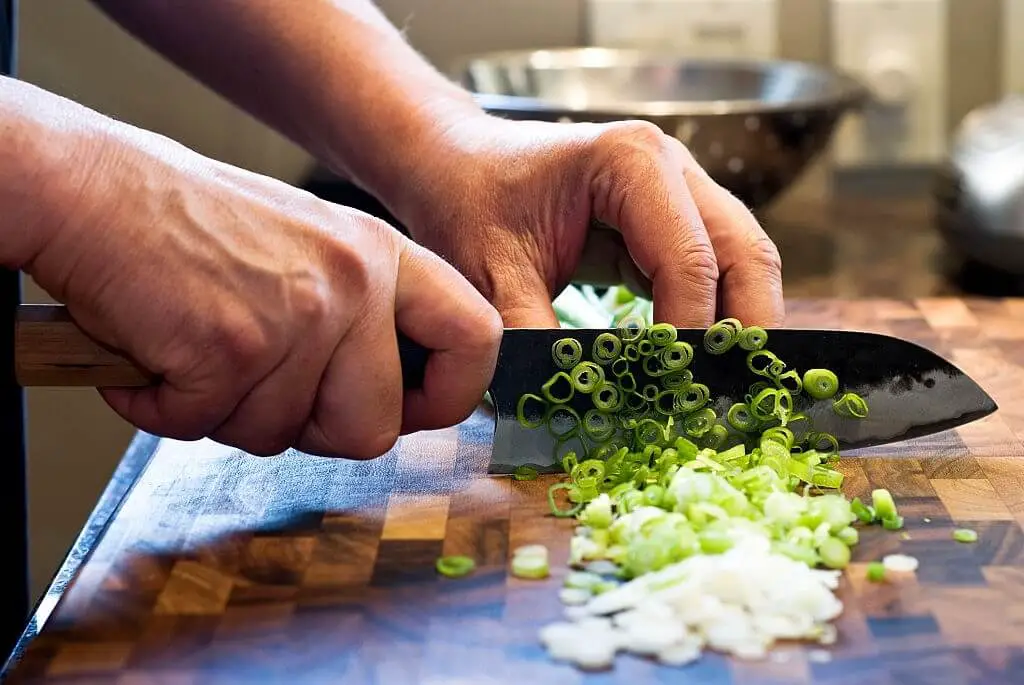
The Nakiri bocho is also called a Japanese vegetable knife. It is a Japanese-style knife used for cutting vegetables.
It has a thin and wide blade and squared-off tips that are designed for chopping veggies, and the knife has a long straight blade. This allows it to cut long vegetables such as eggplants or carrots with ease.
Uses- It’s the perfect knife to use when you want to make thin slices out of cucumber and tomatoes.
Read: How To Sharpen A Knife With Household Items (9 Easy Items)
